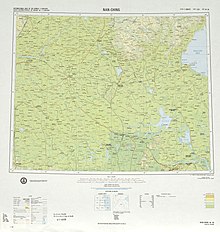Yang-chou
Appearance
English
[edit]
Etymology
[edit]From Mandarin 揚州 / 扬州 (Yángzhōu) Wade–Giles romanization: Yang²-chou¹.[1][2]
Pronunciation
[edit]- enPR: yǎngʹchouʹ, yängʹjōʹ
Proper noun
[edit]Yang-chou
- Alternative form of Yangzhou
- 1929, Witter Bynner, transl., The Jade Mountain[2], Alfred A. Knopf, published 1967, →OCLC, page 262:
- 53. This temple, in Yang-chou, Kiang-su Province, was on a terrace erected by General Wu of the Ch'ên Dynasty and was named after him.
- 1962, Ping-ti Ho, The Ladder of Success in Imperial China[3], Science Editions, →LCCN, →OCLC, page 232:
- As the second capital, Nanking maintained a separate smaller central government and the larger and more important Imperial Academy. Many of the officials and officers were so much attracted by the region's wealth and comfort that they chose to settle here permanently. Their descendants benefited frim family influence and often passed higher examinations under their official southern Kiangsu residential registrations. In addition, the reform in the salt administration around the turn of the fifteenth century further attracted many rich merchant groups to Yang-chou, the headquarters of the country's largest salt administration, although many of them chose to reside permanently in other southern Kiangsu cities.
- 1976, Jonathan Chaves, “Life”, in Mei Yao-chʻen and the Development of Early Sung Poetry[4], Columbia University Press, →ISBN, →LCCN, →OCLC, →OL, page 24:
- In the eighth month of the year, Ou-yang was exiled to Ch'u-chou prefecture in eastern-central Anhui, where he was to remain until early in 1048 when he became Prefect of Yang-chou.
Translations
[edit]Yangzhou — see Yangzhou
References
[edit]- ^ Yangzhou, Wade-Giles romanization Yang-chou, in Encyclopædia Britannica
- ^ “Selected Glossary”, in The Cambridge Encyclopedia of China[1], Cambridge University Press, 1982, →ISBN, →LCCN, →OCLC, pages 476, 487: “The glossary includes a selection of names and terms from the text in the Wade-Giles transliteration, followed by Pinyin, […] Yang-chou (Yangzhou) 揚州”
Further reading
[edit]- Leon E. Seltzer, editor (1952), “Yangchow or Yang-chou”, in The Columbia Lippincott Gazetteer of the World[5], Morningside Heights, NY: Columbia University Press, →OCLC, page 2115, column 2
- “Yang-chou”, in Merriam-Webster Online Dictionary, Springfield, Mass.: Merriam-Webster, 1996–present.
